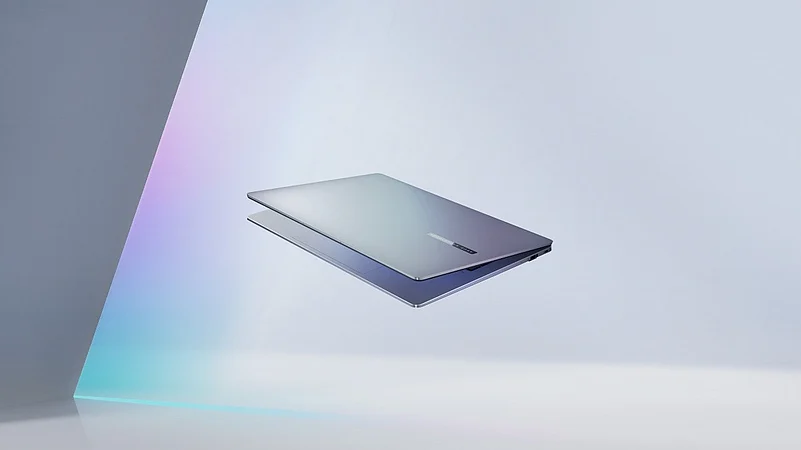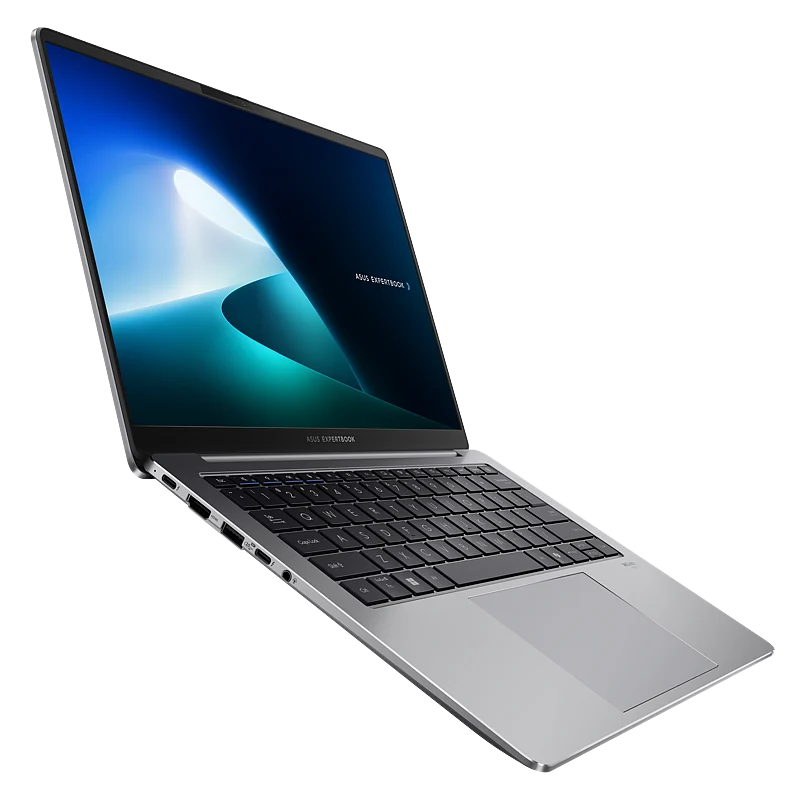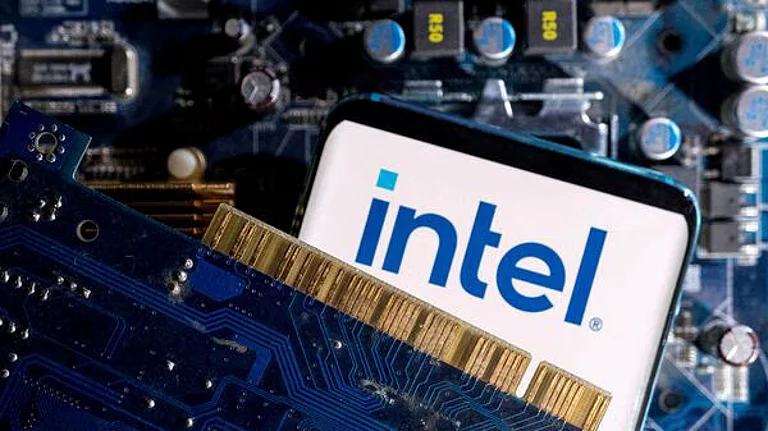There are plenty of Asus laptops in the market these days. Year after year, Asus launches the most number of laptops (and no, I haven’t counted) of all the manufacturers. While the company's commercial portfolio is robust, the choice for business users is quite slim.
Nonetheless, Asus is looking to change that; the latest comes in the form of the ExpertBook P5. A laptop powered by Intel’s Lunar Lake chips has a rugged build, can go an entire day without being plugged in, and has a high-quality IPS screen (144Hz!) and a comfortable (one of the best) keyboard and touchpad. It comes in at 1.27kg, with a minimalistic design (only the shiny Asus Expertbook branding on the lid) and military-grade certification (as business users care for build quality and robustness over style).
The laptop is one of the sturdiest I’ve tested recently. The lid has zero flex, and the hinge is rock-solid. It packs an army of ports and a not-so-expensive starting price. Of course, like all ExpertBook laptops, the P5 is entirely customisable, so the price will vary depending on the internals your company chooses.
The base variant of the laptop costs Rs 1,01,700 (excluding taxes). To purchase the ExpertBook P5, you’ll have to contact Asus directly or have your office place it as one of their next set of laptop orders.

Design and Display
I like the clean, minimalist design. The sturdy laptop feels a little bit like a rock. It isn’t as sleek as some commercial laptops from Asus, but it isn’t heavy. The lid can be opened single-handedly, and the display can go flat at 180 degrees.
I didn’t like that there is now a 14-inch IPS (2,560x1,600 resolution) panel. I hoped the business laptops would follow in the commercial lines’ footsteps. There’s no OLED panel (Asus does offer it in this price range on their commercial laptops), and that’s a shame. Still, the IPS panel has a peak brightness of 300 nits and an anti-glare coating. It’s suitable for indoor usage and in offices (where it’ll probably be most of the time), but if you’re constantly travelling or working outside, the display might let you down.
The display features a 100% sRGB colour gamut. The kicker is that it has a refresh rate of 144Hz. I didn’t expect Asus to stuff a display with a refresh rate over 120Hz, but here we are.
Do business users actually need such a high-refresh-rate display? I highly doubt it, but I’m glad Asus is pushing the boundaries because I wouldn’t want to go back to the days of 60Hz refresh rates.
Ports a plenty
Yes, the ExpertBook P5 features plenty of ports to cover all the needs of business users. Let’s start with the left-hand side. There’s the HDMI 2.1 port, a USB-A 3.2 Gen port, two Thunderbolt 4/USB 4 ports, and a 3.5mm headphone jack.
The right-hand side is relatively sparse. There’s a USB 3.2 Gen 2 Type-A port and a Kensington Nano Security Slot.
Let’s talk about security
One of the mainstays of a business laptop is its robust security features, which differentiate it from commercial ones. There’s the NIST SP 800-155 compliant commercial-grade BIOS. Asus is giving five years of BIOS and driver security updates. Then, there’s the integrated biometric login. This is done via fingerprint reader or Windows Hello (via the IR webcam). The webcam has a privacy shutter.
Then there is the one-year Accidental Damage Protection (included with the three-year warranty), a testament to the device's build quality. In fact, an international warranty is a default when you purchase the ExpertBook P5. Couple that with military-grade protection, and you’ll have a laptop that can survive all kinds of work environments.
You also have integrated biometric login via fingerprint reader or Windows Hello via the IR webcam, which includes a privacy shutter.
Keyboard and touchpad: typing away
I’ll just say it straight up. Asus has made laptops with better keyboards. That being said, the 1.5mm key travel and well-spaced Chiclet-style keys were a pleasure to use. My fingers quickly glided across them, and my typing speed never slowed. An audible sound comes from the keys, but nothing that is a dealbreaker.
The touchpad, however, is fairly large at 3.5x5.3 inches. It’s great for navigation and gestures, and there is good feedback when making a click. It’s a little bit soft, but it’ll do for when I’m not travelling with my mouse.
Performance: Beyond satisfactory for business users
Intel’s Lunar Lake in a business laptop? Well, you get an Intel Core Ultra 5 or 7 chipset. It’s efficient, fast, and good for multitasking.
I tried opening over 100 Google Chrome tabs, playing videos via YouTube, and doing my regular work, which involves Microsoft Word, Microsoft PowerPoint, and much more. This laptop did not stutter for a second.
The time for disappointment came when I tried to play casual games. Yes, even games like TrackMania Nations Forever wouldn’t work well on their highest settings. That’s a slight disappointment. Nonetheless, this is the opposite of a gaming laptop, and you shouldn’t hold this against Asus. I know I’m not.
Furthermore, this isn’t a laptop for content creators. You'd probably never look at this laptop if you’re a graphics designer or video editor. You’d most likely be going the MacBook route.
I liked the quality of the webcam. Even the mic sounded great. The Face Unlock feature was fast and fluid. This was a great laptop for all my long, drawn-out work/conference calls.
Audio
The dual speakers at the bottom of the laptop weren’t the loudest or clearest. Their placement is kind of odd, but at least to Asus’ credit, they’ve done a good job of tuning them. Again, this isn’t an entertainment-first device, so expectations weren’t sky-high. Nonetheless, I did enjoy watching several episodes of John Oliver’s Last Week Tonight on it.
Battery life
With Lunar Lake, Intel was more focused on efficiency than performance. While the ExpertBook P5's performance dipped, battery life took a giant leap. Yes, it’s still not up to scratch with the best laptops out there, but I constantly got a full day’s work out of it.
The laptop lasted an average of 12 hours, with brightness at 75 percent, and I was happy with that. I also recently tested out the Zenbook S 14 (with an OLED display), which lasted much longer.
Overall, the battery life was good, enough for a day of work and then some, but I would have preferred a larger battery since this doesn’t have an OLED panel.
Verdict: Good for businesses?
I’m just going to say it in short: If you’re an office user who doesn’t game and doesn’t need photo/video editing, this is one of the best laptops your organisation can buy. It isn’t the cheapest business laptop out there, but its outstanding build quality, robust security features, and three-year warranty make it a top pick for offices.
I was impressed by the display, performance, and battery life, which is good enough for most organisations.
Plenty of other business laptops (a growing market in India) exist, but Asus is at the forefront of the game. I just wish they had included an OLED panel, so that office workers could use the laptop as an entertainment device during non-working hours.





























